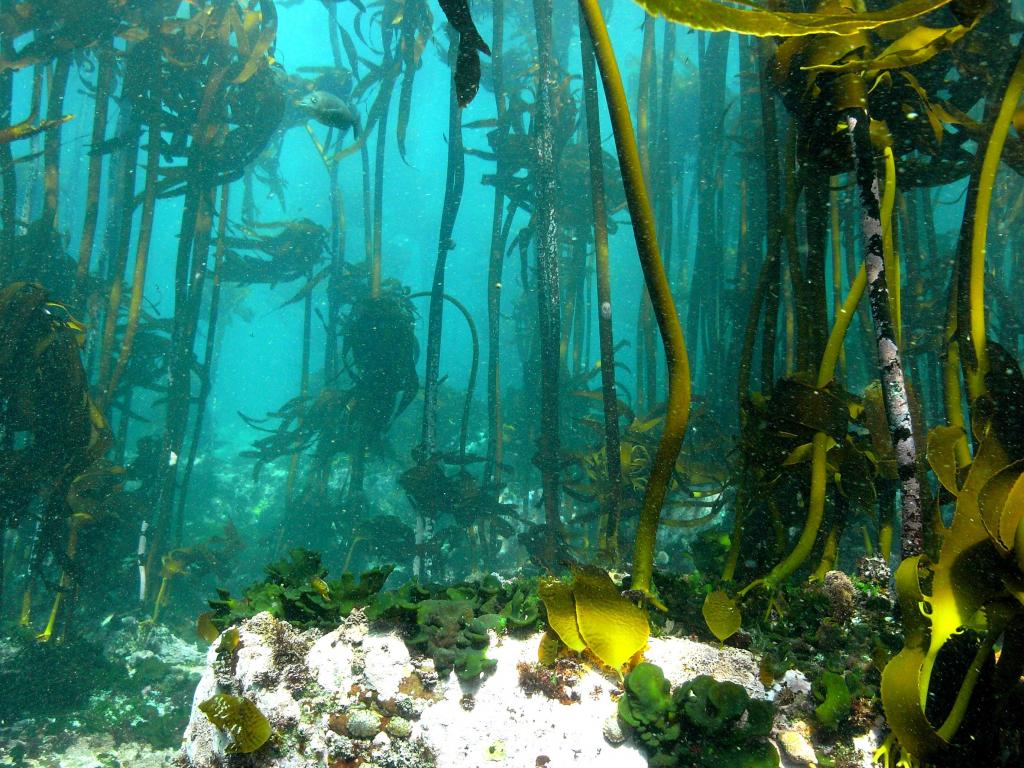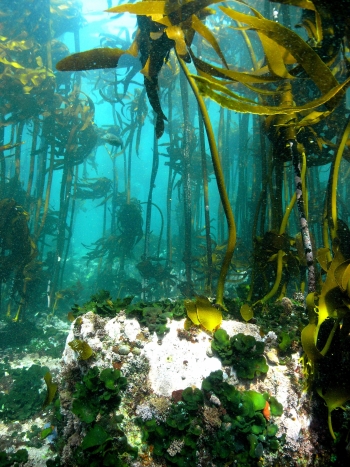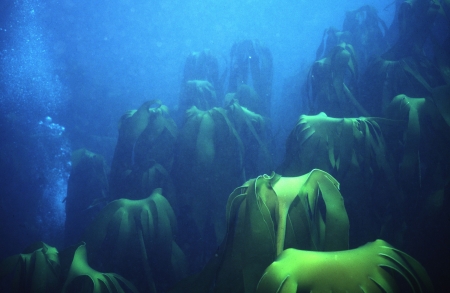Kelp: The canary in the coal mine


Photo: E Max Buffels: Rob Anderson
Kelp forests provide Cape fur seals a place to hide when escaping from Great White sharks. Moreover, they provide essential food and shelter for large parts of the marine ecosystem. But overfishing and climate change are threatening this vital cog in the oceanic life cycle.
Fortunately, a new study has (somewhat) allayed fears that the world’s kelp forests are being completely decimated; while they’re certainly shrinking in some areas, they’re growing in others.
UCT biologist Professor John Bolton was part of a 37-strong team of international scientists who co-authored the study.
“The crux of the matter is that in some parts of the world kelp forests are seriously declining due to climate change (warming seas), anthropogenic inputs and fishing, and ecosystem changes, especially proliferations of sea urchin grazing in many parts of the world,” says Bolton.
Unusually warm temperatures in Western Australia damage Ecklonia (brown seaweed) forests, for example, and in Tasmania the forests of giant kelp, Macrocystis, are rapidly disappearing due to various environmental changes. Chief among these adverse changes are the mainly southward movement of the East Australian Current, which is too warm and low in nutrients to feed the kelp-eating urchins, causing them to move southward too, where they feed on the kelp forests.
In some parts of the world (southwestern South Africa being a good example), however, kelp beds are doing well and even spreading.
Bolton says that their paper, which was written a couple of years ago, documents a small eastward spread, but also indicates that South African kelps are becoming more abundant within their geographical distribution.
“The bottom line from the paper is that there are region-specific responses to global change by kelp forests,” says Bolton.
It’s a matter of place
The new study, which is to be published in the Proceedings of the National Academy of Sciences on 14 November 2016, reports that while kelp has clearly declined in 38% of the regions analysed, it has increased in some 27% of the studied regions, with no net change being observed in 35% of the samples. The range of trajectories seen across regions far exceeded a small rate of decline at the global scale, which sits at 1.8% per year.
Researchers suggest that this variability reflects large regional differences in the drivers of local environmental change. So, while global factors that are linked to climate change are affecting kelp forests, these effects vary by region depending on the kelp species, the local environmental conditions and other sources of stress.
“This is unlike other major groups of inshore marine organisms, such as corals, mangroves and seagrasses, which are under threat just about everywhere,” adds Bolton.
This difference is likely due, in part, to the unique capacity of kelp to recover quickly from disturbances.
“A whole forest of giant kelp can disappear in a season, and it is tempting to overreact to such dramatic change,” said co-author Dr Andrew Rassweiler of Florida State University. “This study presents important context for such changes; kelp can recover just as fast, and all these rapid local dynamics have added up to relative stability at the global scale over recent decades.”

Photo: Underwater Laminaria: Rob Anderson
Unexpected results
The results were surprising, said Dr Kira Krumhansl, the study’s lead author.
“We expected to find that kelp has been declining globally, like many other species, but what we actually found is a much more complex story. We saw some declines, but there were many places where kelp abundances were steady or even increasing,” said Krumhansl, who is a postdoctoral fellow based at Simon Fraser University.
Kelp forests support diverse and productive ecological communities throughout temperate and arctic regions worldwide, providing numerous ecosystem services to humans. Literature suggests that kelp forests are increasingly threatened by a variety of human impacts, including climate change, overfishing and direct harvest. The new study provides the first globally comprehensive analysis of kelp forest change over the past 50 years, identifying a high degree of variation in the magnitude and direction of change across the geographic range of kelps.
“Honestly, I expected this study to be an all bad-news story,” said Dr Jarrett Byrnes of the University of Massachusetts, Boston. “And there are many places around the world where kelps are in decline. But kelp is a rock star of resilience. In many places, it’s managed to hold its own against environmental change. It’s quite exciting!
“What is worrying, though, is that in one third of the regions of the world we studied, even kelps have not been able to withstand the pressures of a changing world. Kelps may well be the canary in the coal mine for the effects of global environmental change for our oceans; their loss may be a sign that we have finally tipped over the edge of a precipice.”
Story Yusuf Omar. Photo Supplied.